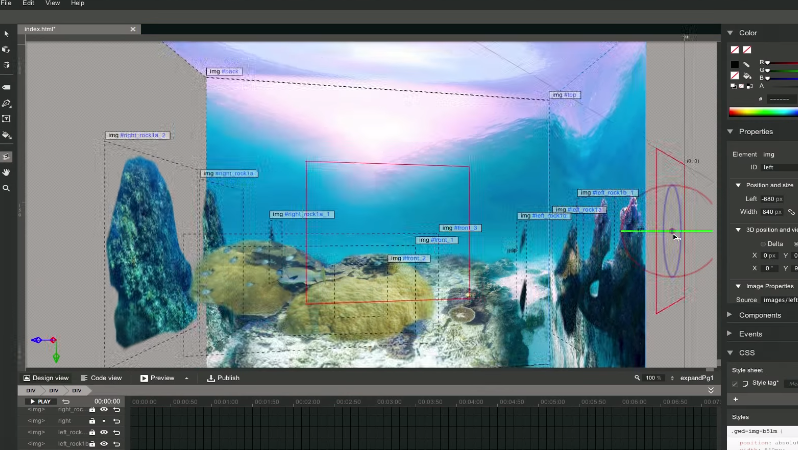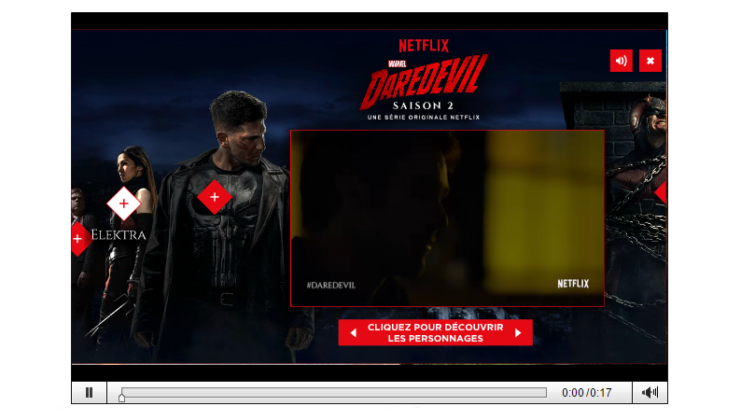
The Rise in Rich Media Ads

Rich media is everywhere. The advance in smartphone technology has brought it to your pocket and the increase in broadband and mobile networks means even traditional print media is getting the rich makeover with things like digital 6-sheets.
And in advertising, rich media is coming to the fore.
So what is rich media advertising and why is it important that you know about it?
As defined by DoubleClick, rich media advertising includes elements of video, audio or other engaging elements that gets people to interact with the ads. This is a shift away from the traditional text or banner ads.
Instead they can expand, float, peel. They can incorporate videos inside ads and show you the prices of products when you hover of them. They are made with HTML5 which is the standard format.
Rich media ads have really inspired the digital advertising landscape and brought together a plethora of new features and pushed the creativity even further.
 In the example above, promoting Netflix’s second season of Daredevil, not only does the ad have a video but it also has rich media content – you’re able to select and highlight different parts of the ad almost like a microsite within an ad.
In the example above, promoting Netflix’s second season of Daredevil, not only does the ad have a video but it also has rich media content – you’re able to select and highlight different parts of the ad almost like a microsite within an ad.
 Tesco promoted their range of personalised Star Wars gifts with a rich media YouTube masthead ad that allowed you to enter your name and have it show in the ad itself.
The increased interactivity really helps improve engagement rates but it’s also hard to not be impressed by the design and creativity of the ads.
Tesco promoted their range of personalised Star Wars gifts with a rich media YouTube masthead ad that allowed you to enter your name and have it show in the ad itself.
The increased interactivity really helps improve engagement rates but it’s also hard to not be impressed by the design and creativity of the ads.
 Canvas ads expand to fill the user’s mobile device and allows you to scroll, watch video content and even includes usage of your smartphone’s tilt sensor so you can tilt your smartphone to gain a different perspective on content.
Twitter also allows you to incorporate HTML rich media ads which allow you to create uniquely engaging Twitter cards and posts. A good example of this is Storify which allows you to almost build a microsite and render it inside your Twitter card.
Canvas ads expand to fill the user’s mobile device and allows you to scroll, watch video content and even includes usage of your smartphone’s tilt sensor so you can tilt your smartphone to gain a different perspective on content.
Twitter also allows you to incorporate HTML rich media ads which allow you to create uniquely engaging Twitter cards and posts. A good example of this is Storify which allows you to almost build a microsite and render it inside your Twitter card.

Key trends for rich media advertising
Increased advertising spend
In the eMarketer report US Digital Display Advertising Trends: Eight Developments to Watch for in 2016, advertising spend on rich media was at $5.44 billion alone in 2015. This is expected to grow to $12.19 billion in 2019. That’s 45% growth in 5 years. Video advertising is also expected to grow by 51% from $7.46 billion in 2015 to $14.77 billion in 2019. Clearly there is a significant focus on advertising with rich content and the increased engagement rates no doubt reflect the growth in advertising spend.Improved engagement rates
| Standard banners | Mobile | Rich media banners | Video banners | |
| Click through rate | 0.12% | 0.14% | 0.44% | 0.39% |
| Engagement rate | 2.14% | 1.62% | 16.85% | N/A |
| Average engagement time (seconds) | 10.4 | 14.1 | 10.7 | 8.3 |
| Average video playtime (seconds) | N/A | N/A | 40.5 | 32.1 |
eMarketer - Consumers Get Engaged with Rich Media report, 23 October 2014
Rich media has the highest CTR, engagement rate and average video play time. In 2013, Econsultancy reported Opera Mediaworks’ study on banner types and found that rich media ads had a 29% better CTR on web and 25% better CTR in-app. The novelty of the new ad format may be, for now, responsible for the better engagement rates but it’s hard to argue against their effectiveness.Smartphone dominance
One of the key drivers for rich media advertising is their suitability for mobile. Smartphone technology has increased significantly and Pew Research Center’s survey in 2015 shows that 68% of people in the UK own a smartphone. Mobile search has over taken desktop and we are seeing lots of trends pointing to smartphones being the primary device for a multitude of activities. Rich media ads can be responsive allowing you to be efficient with your advertising and target users across all of their devices.Rich media examples
One of the reasons why they have high interaction rates than traditional banners is because they allow advertisers to be far more creative.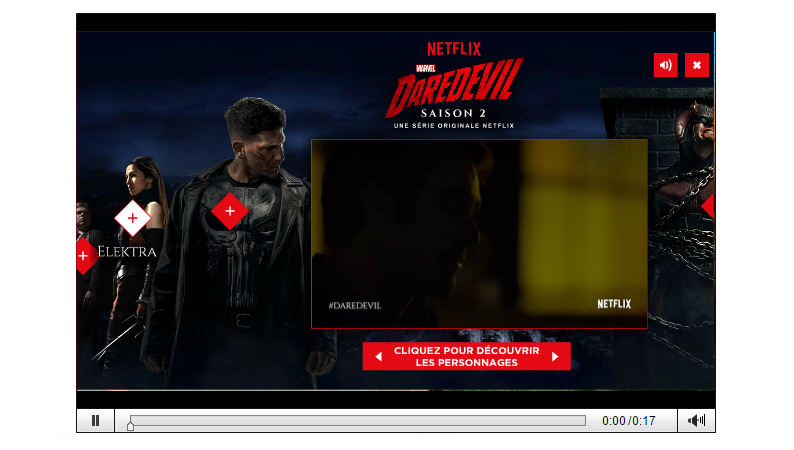 In the example above, promoting Netflix’s second season of Daredevil, not only does the ad have a video but it also has rich media content – you’re able to select and highlight different parts of the ad almost like a microsite within an ad.
In the example above, promoting Netflix’s second season of Daredevil, not only does the ad have a video but it also has rich media content – you’re able to select and highlight different parts of the ad almost like a microsite within an ad.
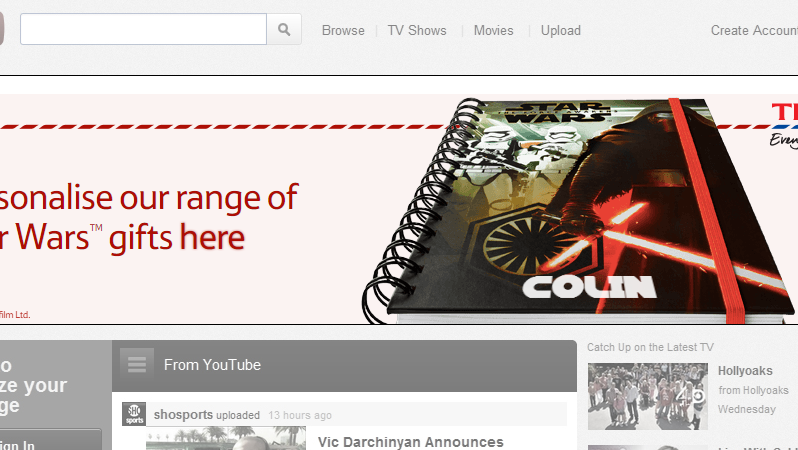 Tesco promoted their range of personalised Star Wars gifts with a rich media YouTube masthead ad that allowed you to enter your name and have it show in the ad itself.
The increased interactivity really helps improve engagement rates but it’s also hard to not be impressed by the design and creativity of the ads.
Tesco promoted their range of personalised Star Wars gifts with a rich media YouTube masthead ad that allowed you to enter your name and have it show in the ad itself.
The increased interactivity really helps improve engagement rates but it’s also hard to not be impressed by the design and creativity of the ads.
More than just display banners
But rich media ads are more than just alternatives to video or display banners. Facebook has recently launched its Canvas platform – a rich media format for mobile devices and geared towards an immersive experience.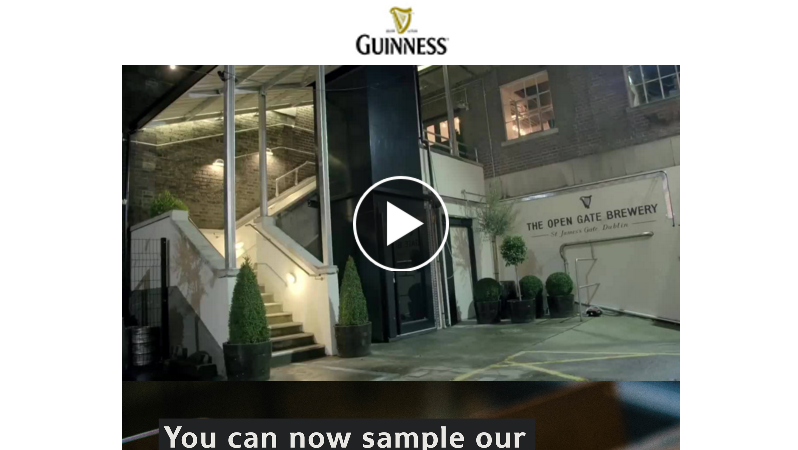 Canvas ads expand to fill the user’s mobile device and allows you to scroll, watch video content and even includes usage of your smartphone’s tilt sensor so you can tilt your smartphone to gain a different perspective on content.
Twitter also allows you to incorporate HTML rich media ads which allow you to create uniquely engaging Twitter cards and posts. A good example of this is Storify which allows you to almost build a microsite and render it inside your Twitter card.
Canvas ads expand to fill the user’s mobile device and allows you to scroll, watch video content and even includes usage of your smartphone’s tilt sensor so you can tilt your smartphone to gain a different perspective on content.
Twitter also allows you to incorporate HTML rich media ads which allow you to create uniquely engaging Twitter cards and posts. A good example of this is Storify which allows you to almost build a microsite and render it inside your Twitter card.
How to get started
There are a number of ways you can get started with rich media advertising – employing the services of a digital or social advertising agency who offer such services can be a short cut to getting them up and running. However, if you want to go it alone you can get anyone who knows HTML5 to code you up some ads. Obviously the more creative you wish to be, the more challenging and complicated your ads will need to become. Google Web Designer allows you to create your own HTML5 rich media ads and they even have a whole suite of online eLearning lessons so you can learn to code and edit your own rich media ads.